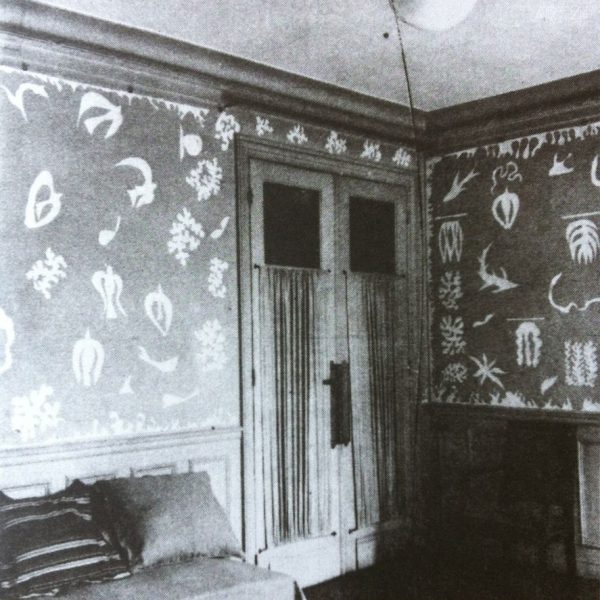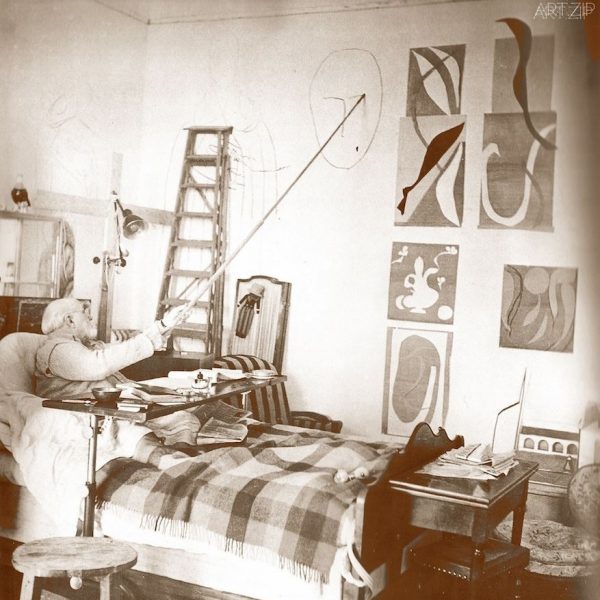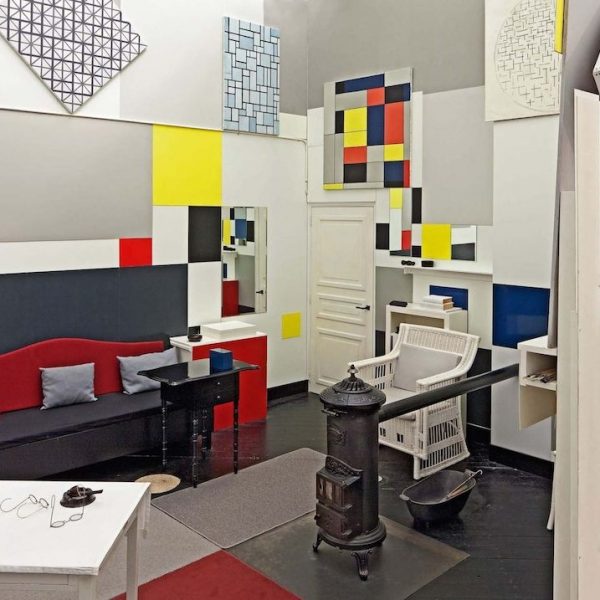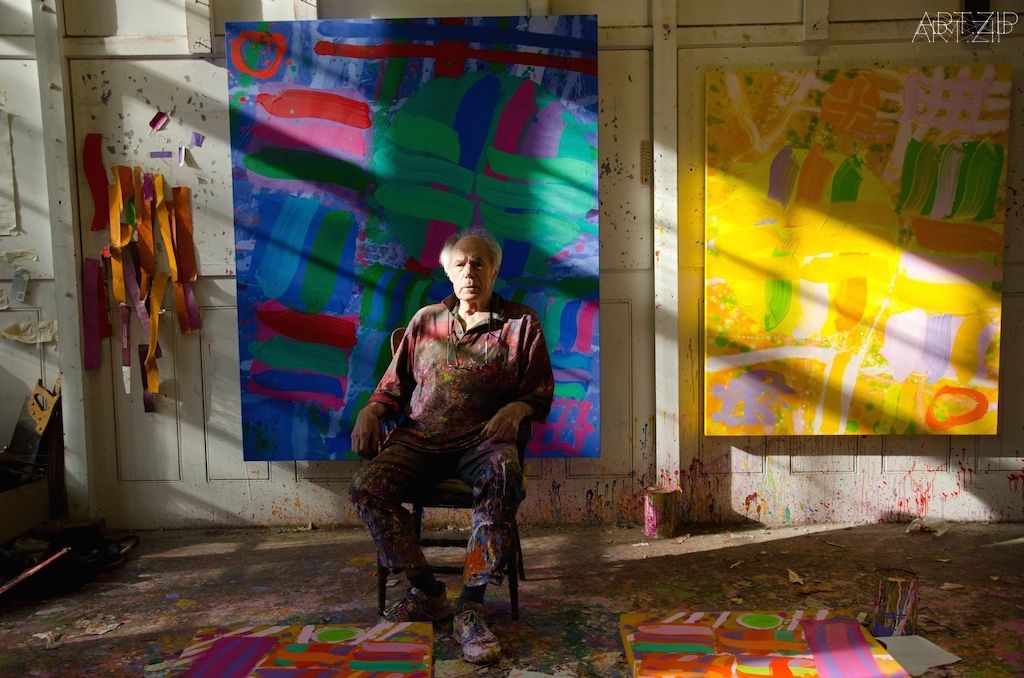
TEXT BY 撰文 x Peng Zuqiang 彭祖強
It’s coming to the time of the year, when many art graduates are moving out of the studio spaces that they have worked at for several years at art schools. When asking them the big question of ‘what’s next” after their degree shows, one common reply is that “…I will need to find a studio space first…” Indeed, for many, a studio is a pre-requisite for maintaining their art practice. However, there are also other students who simply consider their laptop or bedroom as their studio spaces.
又到了畢業季,不少的藝術畢業生都將陸續從他們工作學習多年的工作室搬出。每每問及他們畢業後的打算,最常得到的回復便是:“我得先找個工作室…” 對於許多畢業生而言,擁有一個工作空間,是在學生階段後維持創作的前提。但同樣也有另外一些學生,將自己的臥室,或是電腦當作藝術工作室。
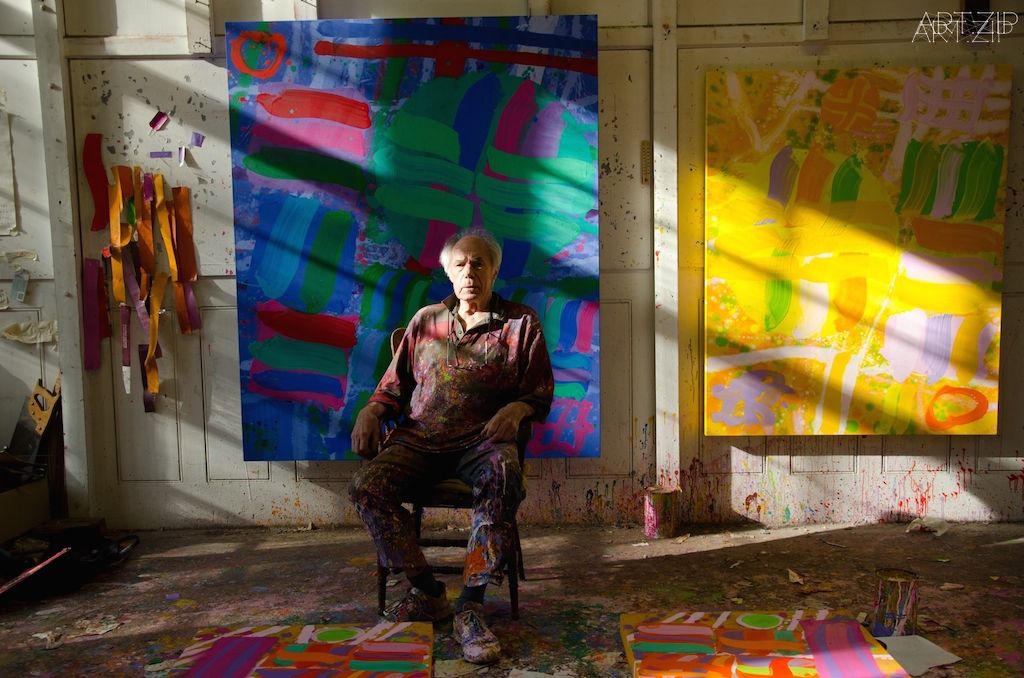
Studios can be considered as birthplaces for many art works, on the other hand, certain artworks never moved out of the studio. The artist might discontinue it, or it might not attract the eyes of the curator and collectors. Studios in the classical era often appear in the form of workshop, in which a few assistants and students would help an artist to produce paintings and sculptures. It is common to see on the labels of renowned paintings, that the ‘workshop’ rather than the leading artist makes them. Famous examples including paintings by Workshop of Pieter Bruegel the Elder, that are on display in the collection of National Gallery in London.
工作室或許是許多藝術品的誕生之地,反而言之,也有許多作品永遠無法離開工作室,它們可能被藝術家放棄,或是沒有被策展人或收藏家所欣賞。在古典時期,工作室常常是以‘作坊’(workshop)的形式出現。這其中,藝術家會有諸多助手協助其完成一幅畫作。而作品最終的署名也會以整個作坊的名義。一個有名的例子,就是在英國國家美術館中陳列的老彼特·勃魯蓋爾工作坊(Workshop of Pieter Bruegel the Elder)的一些名作。
Art production was never a single genius’s work. Studio is still considered to be the place where the artist’s genuineness and inspirations reside. In the modernist era, when the ‘genius’s artist figure’ is further amplified by the mass media. The studio is usually presented, in forms of photography or documentary, as an almost sacred place that is coherent to the artist figure. Sketches, prototypes, and materials surround the male masters of painting, usually alone in their own studio. In the recent exhibition ‘Mondrian and his Studios’ at Tate Liverpool, his studio space at Paris was recreated in the exhibition space. Mondrian’s studio space seems to be the very first place where he experiment with how painting would influence a three-dimensional space. Seeing how his own paintings interact with the furniture, and colour grids on the wall spaces, it is not difficult to discover why he will become such a great inspiration for many designers and architects. But the idea of showing the studio in museums and gallery is an interesting one, since the studio therefore also becomes a piece of art work, open to spectators to find out the relation between the studio, the art works, and the artist. And certainly in the case of Mondrian, the space of his painting and space of his studio forms an interesting comparison.
大多數藝術品通常並不是藝術家們的天才之作,儘管如此,藝術家工作室仍常常被看作是藝術家靈感和天賦的來源。步入現代藝術史時期,藝術家的‘天才’形象被大眾媒體進一步放大。而藝術工作室,則通常借助攝影或是紀錄片的形式傳播於媒體之中,它們往往和藝術家的形象高度統一:繪畫大師(通常為男性),獨自一人在工作室中作畫,身邊擺滿草稿、模型和材料。在泰特利物浦當前的展覽《蒙德里安和他的工作室(Mondiran and his Studios)》中,蒙德里安在巴黎的工作室被復制重現於展覽空間之中。蒙德里安的工作室看上去是他探索如何用繪畫來影響立體空間的實驗場。他的畫作和室內家具及墻上的裝飾交相呼應,由此不難看出蒙德里安的作品為何會成為許多設計師和建築師靈感的來源。而在這個展覽中,工作室本身也成為了一件藝術作品,觀者可以自主探索工作室和藝術家以及作品之間的關係。而蒙德里安精心布置的工作室空間也和他同樣注重空間幾何的繪畫風格形成一組有趣的比較。
Curators and Critics practice something called studio visit. Those who visit the studio get to see the work before its final presence in the exhibition spaces. From there the completion of an art work also includes contribution from the visitors. A work in the studio is usually different from a work presented in a museum. Take Matisse’s practice for instance, it can be argued that Matisse’s paper cut outs were considered as part of an ‘environment’, the different cut-outs are together to form a ‘bigger picture’, as they are arranged in his studio space, rather than being framed, and displayed individually as art objects in the exhibition form we are more familiar with these days. Out of the studio space and in the white cube space of museum, the work is presented out of its original context.
策展人、批評家和藏家們會進行工作室訪問,他們往往能在作品進入展覽空間前先睹為快。在工作室中,一件作品的最終完成,往往也得益於藝術家和這些來訪者的交流討論。一件在工作室中的作品,往往和其最終展出時的呈現方式大相徑庭。以馬蒂斯(Henri Matisse)的剪紙作品為例,他的剪紙作品在擺放模式上,往往是相互作用並構成一個更大的‘環境’。這在其工作室的照片之中最為常見。然而當作品出現在美術館中,卻往往各自獨立,被畫框束縛,並一一隔開。在美術館的展覽空間中,作品被帶出原有的環境,而演變成了單獨的藝術品。
In the post-studio era, the image of the studio has diversified. The contemporary studios, range from the huge artist factory to a powerful laptop, from a research lab to a desk in the artist flat. It is not necessarily a place where hands and clothes get dirty; the idea of physical space is no longer a major concern for many. The definition of ‘The Studio’ accommodates the increasingly expanding understanding of art practice, and evolves with it almost simultaneously.
而在當下的‘後工作室時代’,工作室的定義則更加的寬泛。當代的藝術工作室,大至幾千平方米的巨型藝術工廠,小至一臺有效率的筆記本電腦,還有從藝術科學實驗室到藝術家住處的一張桌子。工作室不再一定是能看到藝術家渾身顏料印記樣子的地方,一個實在的空間也不再是許多藝術家所需要的。對於‘工作室’的定義,也再逐漸隨著‘藝術創作’定義的不斷更新而日新月異。
However, what a physical space does provide is the peer group environment. In art school, the art practice modules are often named as ‘Studio practice’. In an art college setting, many students would share a room that is divided into different studio spaces, or just ‘tables’. Despite the limited space given, the accompanying of other students, the conversation and inspiration one can get in a studio environment are both crucial to many young artists’ development. This also carries on benefiting the artist in the earlier stage of their career, when they need to share rented studio spaces with others. Therefore, the studio needs to be open. Events such as ‘Open Studios’ these days, invites the public to see arts in non-exhibition formats. It opens up the gap between the private and the public.
但與此同時,一個工作室空間所能提供的,是一個和其他藝術家共事的環境。在藝術學校中,藝術創作課往往被稱作‘工作室創作’。每個學生都會和數位其他同學共用一個空間,空間往往被粗略分割開,或者用不同桌子來代表其差別。儘管空間甚小,但其中與其他藝術家所產生的對話和交流,對年青藝術家往往是至關重要的。當他們從學校工作室搬入別處合租的工作室時,這樣的環境也會繼續沿襲下來。也正是因為如此,工作室需要保持‘開放’,時常會有‘工作室開放日’(Open Studio)這樣的活動,邀請大眾或是同僚來參觀工作室,來看看在工作室狀態中展出的作品,而這樣的活動,也正是拉近藝術家們與觀眾距離的一個方式。
The increasing amount of foreign residencies rejects a narrow definition of the studio as fixed and local space. As artists nowadays complete their research through traveling or swap studios with artist abroad, the space of the studio has moved beyond its white walls. It is becoming increasingly fluid and temporary. Many artists consider the cyber space as their studio; artists live online while the storage is left to the cloud. Nevertheless, in this so-called post-internet eras, as increasing amount of artists are advancing their technology. There’s no need to have a physical well-lit space, and the overtly often conversations and exchanges could even be considered as redundant to some artists. This is a reflection of the shift from a labor-intensive art production; to the increasingly conceptual-led or technologically informed art practice.
與此同時,各式各樣的海外藝術家駐留計劃,也不斷在給‘工作室’賦予著新的定義。工作室不再只是一個固定的空間,藝術家們需要以旅行或訪問的方式完成調研工作,或者是和來自其他地方的藝術家互換工作室。工作室已不再是幾面白墻所圍成的狹小空間,它的定義充滿靈活性和流動性。許多藝術家也會把網絡空間看作是其工作室。藝術家生活並工作在互聯網之上,而他們所需要的儲物空間就都交給了互聯網雲端。無論如何,在這個‘後網絡時代’,不少藝術家正不斷更新著他們對新科技的使用。或許他們不再需要一個光線充足的室內空間,而那些在工作室和其他藝術家產生的日常交流或許對有些藝術家而言已經趨於繁瑣。這正是半個世紀以來從手工需求量較大的藝術創作模式,到以觀念為主導或是科技發展影響下藝術創作變革的反映之一。
Nowadays, studio is no longer a sacred place where only the artistic gestures are performed, the artist is more than anytime in the history, situated in a network of the art world. Studio therefore is also a space where emails and other daily mundane tasks are resolved. The art admin works that continues to demand artist’s production hours is taking over much of the ‘practice’ time. The indoor labor of art production to many mostly operates through a laptop. Throughout history, studio serves as the temporary space for a piece of artwork. Studio never dies, it is only been increasingly understood in its expanded forms.
如今,工作室早已不再是那個藝術家施展其天才技藝的神秘空間,藝術家們從未像現在這樣置身於一個復雜的藝術關係網絡之中。而工作室由此也成為了一個需要藝術家不斷回復郵件和完成其他線上交流的場所。藝術工作中繁雜的日常管理工作,侵蝕著藝術家‘創作’的時間。而這些交流工作又大部分發生在電腦和網絡之上。可能長久以來,工作室都是一個藝術暫留的空間,它從未消失,只是不斷在更新著它的定義模式。

